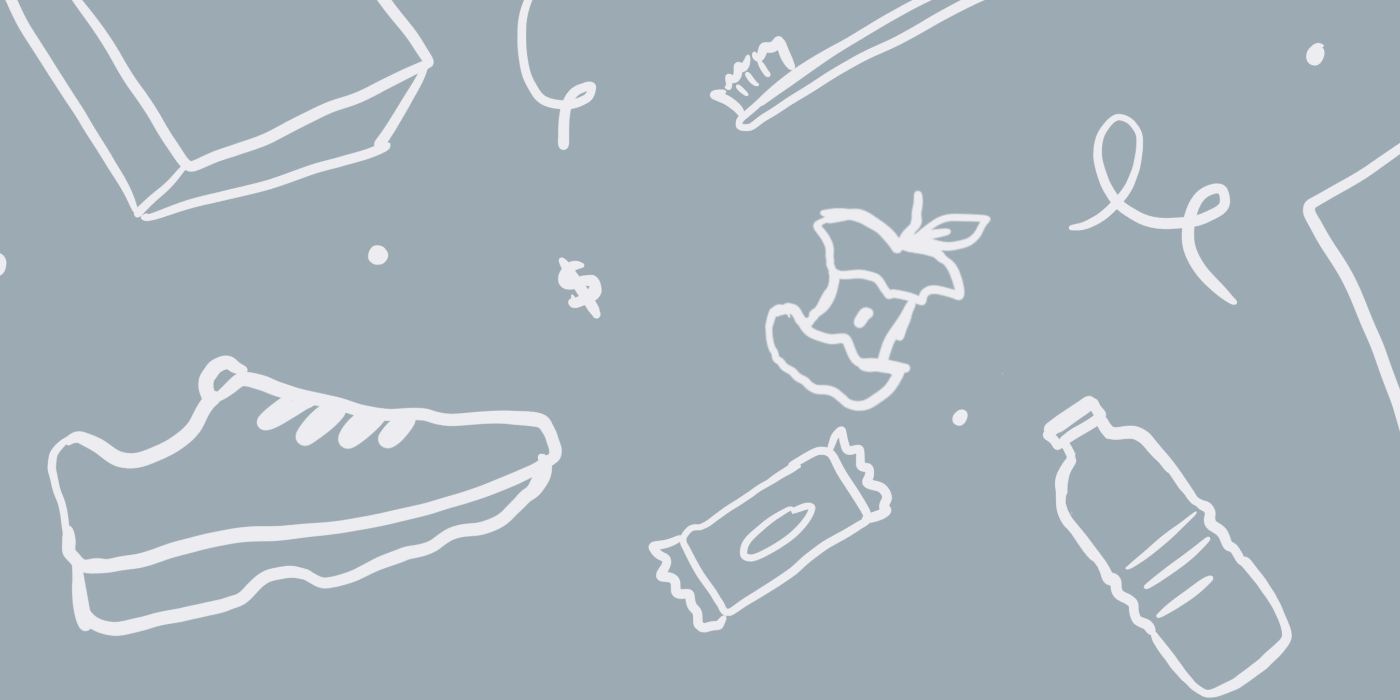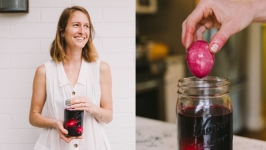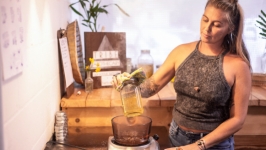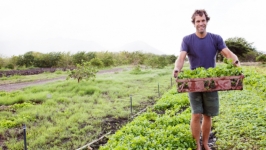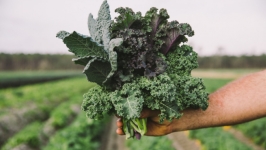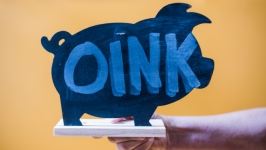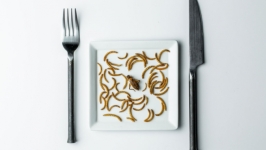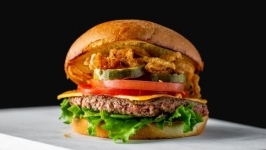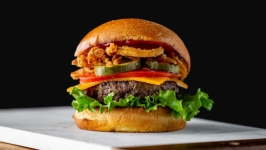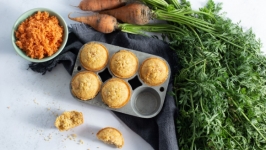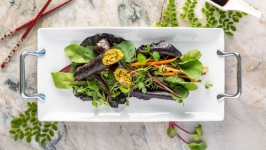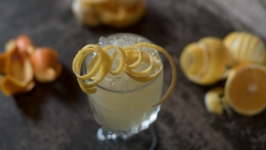The Environmental Impact of Personal Wellness
Once the holiday celebrations are over, many of us tend to focus on healthy personal habits when the New Year arrives. We strive to lose weight, drink lots of water, floss more and eat plenty of vegetables. Personal health, however, inflicts costs to the environment, more so than we may realize, especially when you consider the amount of plastic packaging involved in our efforts to stay healthy.
As the Environmental Supervisor for St. Johns County, Tara Dodson sees this daily on the 41 miles of beach she manages. She acknowledged that plastic packaging is the number one item seen during beach cleanups. “When scientists say that by 2050 plastic trash will outweigh fish, it is a real stat and without positive and forward-moving change we are only hurting ourselves,” Dodson said, while also recognizing the challenges for anyone trying to reduce plastic packaging waste.
Does our quest for personal well-being have to result in a degradation of the environment? There are many ways we can cut down our impact, keeping both ourselves and our planet healthy.
3.5 POUNDS: Amount of pulp waste from one 16-ounce glass of juice
Ah, juicing. So clean! So delicious! And so wasteful. It’s estimated there are more than 5,000 juice or smoothie joints across the US. But the amount of food waste generated along with all the plastic cups and straws used are hard to reconcile with a healthy planet.
Alternative: Whether you purchase juices or make them at home, be sure the leftover pulp is composted. At home, make crackers, muffins or juicer pulp soup out of the byproduct. And be sure to bring your own cup and straw if purchasing from a local eatery.
450 YEARS: Length of time it takes a plastic water bottle to completely degrade:
As we go off to work or daily errands, a kind employer, mechanic or doctor’s office employee provides a water bottle. It’s free, so you take it, but even if you use the bottle over and over, it will inevitably join the waste stream.
Alternative: Bring your own water bottle. Seek out businesses (and employers) that belong to the North Florida Green Chamber of Commerce (NFGCC). This organization helps local businesses become more sustainable by guiding them toward the resources they need. NFGCC’s Executive Director Christina Kelcourse said of their mission, “Our job is to make it cool and convenient to be green.” To that end, and understanding that businesses tend to produce more waste, NFGCC recently started a Buyer’s Club. The Club leverages volume to assist companies with cheaper access to green products, like eco-friendly cleaning products, bottled water, to-go packaging and more.
$216.3 BILLION: The amount spent globally on vitamins and other dietary supplements by 2026
With dietary supplement use at an all-time high, most studies show a majority of Americans taking them. Whether recommended by a friend or health care practitioner, from probiotics to vitamins the choices are endless, mostly purchased online and commonly packaged in difficult to recycle plastic. When forgotten in the far reaches of a dark cabinet, tossing their plastic containers into landfills or flushing the expired remains into our water system are not ideal environmental choices.
Alternative: Look for bottles made from post-consumer recycled plastic or reusable glass jars. Recycle your containers, don’t trash them. Check food labels to avoid “doubling up” on vitamins you may be getting from food already. Many products like cereals and drinks are vitamin fortified, and many micronutrients can be consumed by simply eating whole foods. Instead of grabbing a probiotic single-shot, eat probiotic rich fermented foods.
80.1 MILLION TONS: Weight of containers and packaging in municipal solid waste in 2017
Finding whole foods in bulk quantity (with minimal packaging) can be tough on the First Coast. Few of our major local grocery chains have a bulk food section, and BYO containers are not encouraged.
Alternative: Shops devoted to bulk items and sustainable (or minimal) packaging are popping up in the area, and there are options at our farmers’ markets. Remember to bring your own bags or jars!
MORE THAN 1 BILLION: The number of toothbrushes discarded in the US every year
Dental hygiene recommendations include brushing after meals and daily flossing. Yet toothbrushes and the packaging from toothpaste and dental floss range from difficult to impossible to recycle.
Alternative: Look for products like zero waste floss in refillable glass containers, toothbrushes made from recycled materials (or ones that can be recycled like those made with bamboo) and consider toothpaste tablets (instead of paste in a plastic tube) that come in small, recyclable cardboard boxes.
3 BILLION DOLLARS: The size of the energy bar market in the U.S. in 2018
Everyone needs a boost occasionally, and commercially available health bars are an easy meal replacement or snack. They come with a lot of extras though, like individual plastic wrappers, lots of sugar and unrecognizable processing.
Alternative: Make bars at home. With an infinite number of flavor combinations, homemade snacks allow for control over variables like the size, sugar content and the whole foods used to prepare them. Plus, they can be wrapped and stored in reusable containers and/or paper-based sandwich bags which break down more easily when they hit the landfill.
1.5 TO 5 CUPS: Daily consumption of fruits and vegetables recommended by USDA
If buying produce at grocery chains or big box stores, excess packaging is the norm and pre-prepped washed and chopped items come in plastic tubs or bags.
Alternative: Look to “precycle.” That is, consider how an item is packaged before you purchase it, and look for items that aren’t pre-packaged in loads of plastic. Bring your own bags to the grocery store. Opt not to double-bag your produce in plastic fruit and veggie bags. Shop at local farmers’ markets or area producer markets where the fresh goods are in their natural state.
8 MILLION PEOPLE: Yearly Participants in Organized Running Events Worldwide
There is a race for every fitness level from couch-to-5K to ultra marathons. Not all races are created equal when it comes to the planet, though. Consider the transportation effect: a flight if you choose a “destination” race and tens of thousands of runners who need shuttle rides to the start. Pre-race packets come in plastic bags, single-use plastic bottles or cups are everywhere and packets of energy goo are handed out every few miles.
Alternative: Seek out trail runs. They tend to be environmentally friendlier, probably because most take place in the woods. Runners are encouraged to carry their own fluids in refillable hydration backpacks. The race swag is often a reusable item like a pint glass or a hat. Jacksonville-based JTC Running has touted going green at recent races including the autumn Guana trail races (all finishers received a t-shirt and hat instead of medals) and January’s Go Green Winter Beach Run. With the help of Beaches Go Green, the Beach Run has adopted many earth-friendly practices, including no single use plastic, providing compost and recycling bins and more.
As we work toward personal well-being, let’s also work to make sure that the price paid for that well-being isn’t the environment. Consumer demand will eventually cause a major shift. As NFGCC’s Kelcourse said, “We’re all in this together.” Shop small and patronize a business on the Green Marketplace list (available on the Green Chamber of Commerce website). Brushing our teeth is a good habit, and so is breaking our plastic habit. “With every sustainable choice, we are creating new habits,” said Dodson, “and that is what sustainability is really about. It is about holistically approaching the matter and changing the habits to create a better future for everyone.” When you work on you, you have the power to work on the environment too.


